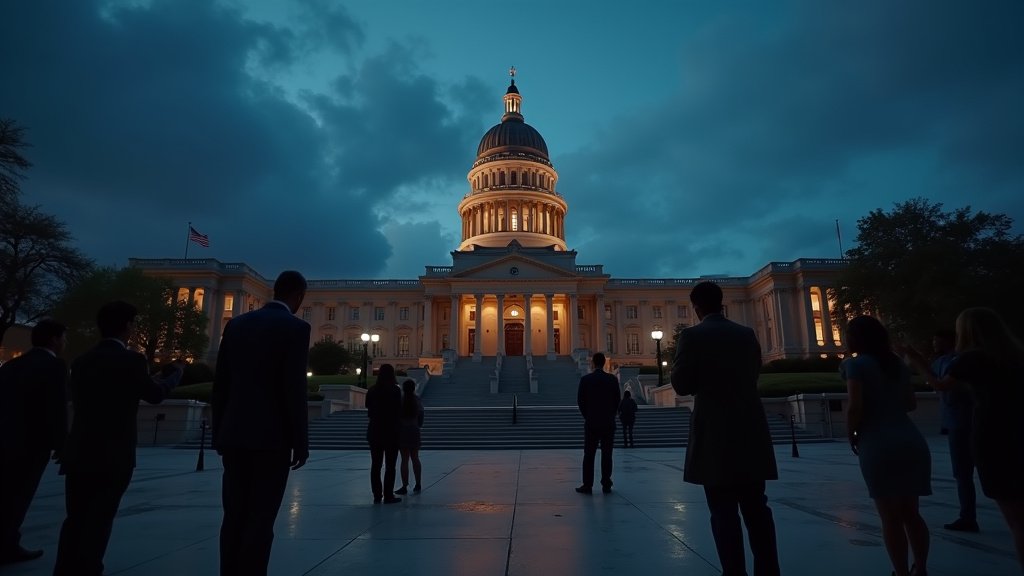AUSTIN, Texas – Just hours after the Texas Senate approved a new congressional map, a coalition of thirteen Texas voters has filed a federal lawsuit, alleging the recently passed legislation constitutes an unconstitutional racial gerrymander designed to dilute the voting power of Black and Latino communities. The filing marks the latest legal salvo in a contentious redistricting process that has seen heated debates and partisan standoffs.
Governor Greg Abbott has publicly stated his intent to “swiftly” sign the bill, designated as House Bill 4, into law. However, plaintiffs, supported by the National Redistricting Foundation (NRF), contend that the map unlawfully targets majority-minority districts based on race, a move they argue violates the Voting Rights Act and the Fourteenth Amendment’s Equal Protection Clause.
The Core of the Challenge: Racial Gerrymandering and Vote Dilution
The complaint, filed in the U.S. District Court for the Western District of Texas, supplements an ongoing legal challenge against the state’s previous redistricting maps. The plaintiffs assert that HB 4 intentionally dismantles existing majority-minority districts, replacing them with majority-Anglo districts. Specific allegations include the “packing” of minority communities into single, heavily concentrated districts to limit their overall influence and the “cracking” of other communities across multiple districts, ensuring their preferred candidates are consistently defeated.
In Harris County, for example, the lawsuit claims that the new map collapses two longstanding coalition districts. It allegedly packs Black voters into one district while reconfiguring another, intended to be Latino-majority, in a way that election data suggests would still favor Anglo-preferred candidates. This strategy, critics argue, increases the number of districts where Anglo voters form a majority of eligible voters, thereby reducing opportunities for minority voters to elect candidates of their choice.
Political Maneuvering and Legislative Showdown
The passage of HB 4 comes after a mid-decade redistricting effort, an unusual move spurred by President Trump’s desire to bolster Republican congressional seats ahead of the 2026 midterm elections. While redistricting typically occurs once a decade following the U.S. Census, Texas lawmakers initiated this special session to redraw district lines. The state’s growing minority population, which accounted for 95% of its growth between 2010 and 2020, finds itself at the center of these political calculations.
During the legislative process, Texas Democrats attempted to stall the bill’s advance. State Senator Carol Alvarado made a notable effort to filibuster the measure in the Texas Senate. However, her attempt was blocked by Republicans who cited a fundraising email as grounds to cut off debate, forcing a vote. Despite these efforts to delay, the bill ultimately passed along party lines.
Governor Abbott has championed the new map, referring to it as “One Big Beautiful Map” and affirming his commitment to its swift signing. Republican lawmakers, like bill sponsor Senator Phil King, have stated their goals were to ensure legal compliance while improving Republican congressional prospects in Texas, vehemently denying accusations of violating the Voting Rights Act.
A History of Contentious Redistricting in Texas
Texas has a long and complex history with redistricting, often involving legal challenges. The state’s existing maps, drawn in 2021, already faced lawsuits alleging violations of the Voting Rights Act. The U.S. Supreme Court has also signaled potential reviews of minority-majority districts created under the Voting Rights Act, adding a layer of uncertainty to the legal landscape.
The National Democratic Redistricting Committee (NDRC) has analyzed the proposed map, asserting that it reduces the number of “opportunity districts” for Black and Latino voters compared to the current, already challenged map. They argue this is a “power grab” that disproportionately harms communities of color who have driven much of the state’s population growth.
The Legal Battle Ahead
The immediate aftermath of the Senate’s approval saw the filing of a supplemental complaint by the plaintiffs, who are represented by the Elias Law Group and The Law Office of Max Renea Hicks. The National Redistricting Foundation is providing financial and strategic support for this legal challenge. A federal court has scheduled a hearing for August 27 to consider a motion seeking an injunction to block the map’s implementation.
Legal experts anticipate that lawsuits will seek expedited review to ensure any potential changes are made before candidate filing deadlines for the 2026 elections. The current news buzz in Texas suggests this legal fight is far from over, with profound implications for the state’s representation in Congress and the voting power of its diverse electorate. The outcome of these legal battles will be critical in determining whether the new map stands or requires further alteration.






